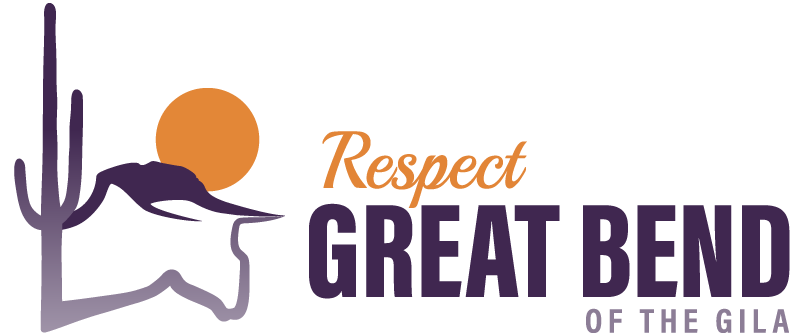
FAQs
Whose lands are these?
Most of the Great Bend’s archaeology attests to Patayan and Hohokam cultural and agrarian traditions (ancestral Yuman and ancestral O’odham, respectively). These were contemporaneous yet contrasting ways of life that overlapped in the region. Over time, those customs merged and diversified, ultimately becoming the Indigenous traditions that continue today. At least 13 federally recognized Tribes have cultural, historical, and ancestral ties to the Great Bend of the Gila. These ties live on through oral and written history, story, song, ceremony, pilgrimage, and other traditions and ways of knowing.
In addition to living and farming in the Great Bend, people have used the Gila River valley as a travel corridor for millennia. Several ancient and significant Indigenous trails cross this terrain. With the coming of Euro-Americans, the valley also became an overland route between Spanish settlements in Sonora and missions along the California coast. Father Eusebio Kino blazed this trail in the late 1699, and Juan Bautista de Anza formalized it in 1775.
The Anza Trail served as the foundation for many trails and roads, including Kearny’s trail for the Army of the West, Cooke’s Wagon Road for the Mormon Battalion, and the Butterfield Overland Stage Line. Stage stations and Euro-American settler communities began springing up along these routes in the 1860s. The settlers brought ranching, commercial farming, and mining. Many families in the towns of Buckeye, Arlington, and Gila Bend are their descendants. These communities also have traditional connections to the Great Bend of the Gila.
Our proposal seeks permanent protections for existing federal lands. In that sense, these are public lands that will belong to all of us in perpetuity. As we reflect on the deep history of the Great Bend, it is important to acknowledge that more recent places and routes in the Great Bend also represent the harmful and painful legacy of what colonization and America’s westward expansion meant for the Indigenous communities whose homelands these are. It’s time to recognize this complicated history by listening to Tribes, honoring their connections to this land, protecting the Great Bend, and following Tribes’ preferences for this landscape’s management.
What are the benefits of protecting this place?
Local communities, Tribes, conservationists, the military, businesses, and future generations all stand to benefit from permanent protections for the Great Bend of the Gila. The Great Bend of the Gila is also home to numerous enduring, yet fragile, cultural and wildlife resources that face numerous threats without long term protections.
What is a National Monument?
The Antiquities Act grants U.S. Presidents the ability to designate federal public lands, waters, and cultural and historical sites as national monuments with a Presidential Proclamation. National monuments are designated to safeguard public lands and waters that have cultural, historic, ecological, and scientific importance to ensure that future generations can enjoy these places.
What is Wilderness?
Wilderness is the term used for the government’s highest form of land protection—federally designated wilderness. Wilderness designation directs land management agencies to prioritize the natural functioning of the land. Wilderness areas are designated by Congress on federal public lands. The Wilderness Act established the National Wilderness Preservation System (NWPS) to include all designated Wilderness areas. The NWPS now includes 111 million acres in hundreds of Wilderness areas.
Where is the Great Bend of the Gila?
The Great Bend of the Gila is a stretch of river valley and surrounding desert between the cities of Phoenix and Yuma, Arizona. View a map of the proposed boundaries.
What lives here?
The Great Bend is an important core habitat for species such as the endangered Sonoran pronghorn, mule deer, Desert bighorn sheep, javelina, Le Conte’s thrasher, and others.
Who supports these protection efforts?
The Respect Great Bend Coalition is led by The Wilderness Society and Archaeology Southwest. Partners include the Arizona Faith Network, Chispa Arizona, Conservation Lands Foundation, GreenLatinos, HECHO, Nuestra Tierra, Protection Campaign, Sierra Club (Grand Canyon Chapter), and Western Conservation Foundation.
Draft map showing proposed boundaries for permanent protections.
Banner image: Dawn Kish
